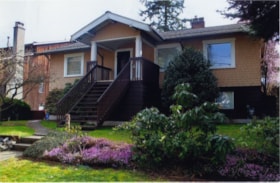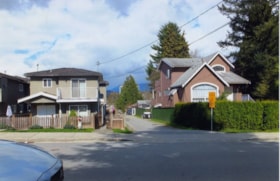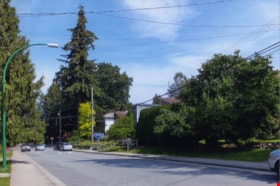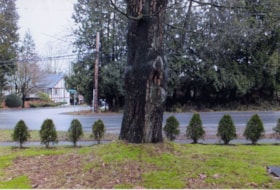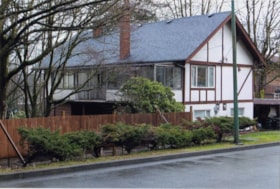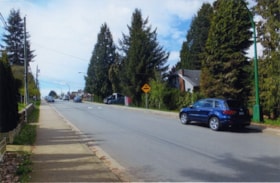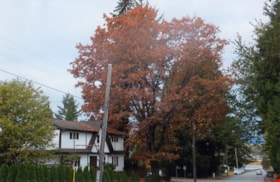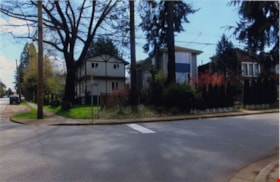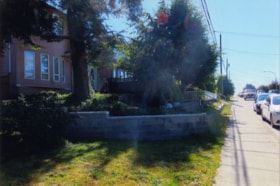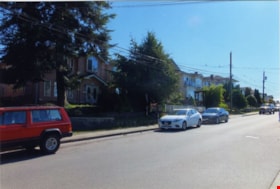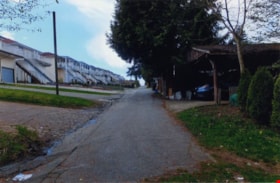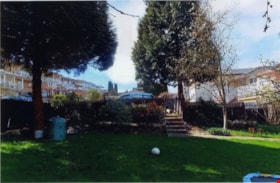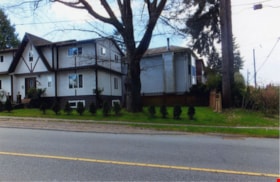More like 'Habitat For Humanity construction site'
Narrow Results By
Decade
- 2020s 104
- 2010s
- 2000s 617
- 1990s 526
- 1980s 505
- 1970s 1164
- 1960s 475
- 1950s 591
- 1940s 538
- 1930s 451
- 1920s 661
- 1910s 528
- 1900s 185
- 1890s 24
- 1880s 49
- 1870s 3
- 1860s 1
- 1850s 1
- 1840s 1
- 1830s 1
- 1820s 1
- 1810s 1
- 1800s 1
- 1790s 1
- 1780s 1
- 1770s 1
- 1760s 1
- 1750s 1
- 1740s 1
- 1730s 1
- 1720s 1
- 1710s 1
- 1700s 1
- 1690s 1
- 1680s 1
- 1670s 1
- 1660s 1
- 1650s 1
- 1640s 1
- 1630s 1
- 1620s 1
- 1610s 1
- 1600s 1
Subject
- Agriculture 1
- Agriculture - Farms 3
- Buildings 1
- Buildings - Civic - Museums 2
- Buildings - Commercial 1
- Buildings - Commercial - Grocery Stores 2
- Buildings - Commercial - Restaurants 4
- Buildings - Commercial - Service Stations 1
- Buildings - Commercial - Stores 1
- Buildings - Heritage 1
- Buildings - Industrial 1
- Buildings - Industrial - Factories 1
Interview with Harry Toy, Beverley Babey and Christina Toy
https://search.heritageburnaby.ca/link/museumdescription20285
- Repository
- Burnaby Village Museum
- Date
- [1905-2023] (interview content), interviewed 25 Sep. 2023
- Collection/Fonds
- Burnaby Village Museum fonds
- Description Level
- Item
- Physical Description
- 1 sound recordings (wav) (121min., 14 sec.) + 1 sound recording (mp3) (121 min., 13 sec.)
- Scope and Content
- Item consists of a recording of an oral history interview with Harry Toy, Beverley Babey and Christina Toy conducted by Burnaby Village Museum researcher Denise Fong on September 25, 2023. The interview is divided into four sections: early life of Harry Toy, the Canada Way Food Market, the Fraser M…
- Repository
- Burnaby Village Museum
- Collection/Fonds
- Burnaby Village Museum fonds
- Series
- Museum Oral Histories series
- Subseries
- Many Voices Project Interviews subseries
- Description Level
- Item
- Physical Description
- 1 sound recordings (wav) (121min., 14 sec.) + 1 sound recording (mp3) (121 min., 13 sec.)
- Material Details
- Interviewer: Denise Fong Interviewees: Harry Toy, Beverley Babey and Christina Toy Location of Interview: Residence of Harry Toy Interview Date: September 25, 2023 Total Number of tracks: 1 Total Length of all Tracks: 02:01:13 Digital master recording (wav) was converted to mp3 for access on Heritage Burnaby
- Scope and Content
- Item consists of a recording of an oral history interview with Harry Toy, Beverley Babey and Christina Toy conducted by Burnaby Village Museum researcher Denise Fong on September 25, 2023. The interview is divided into four sections: early life of Harry Toy, the Canada Way Food Market, the Fraser Merchants’ Association and Harry's daughters, Beverley Babey and Christina Toy's memories of growing up in Burnaby. 00:00:00 – 00:23:53 Harry Toy shares biographical information about himself and his ancestors. Harry provides information about his migration to Canada and his life in Manitoba, attending school, working at the family restaurant and teaching high school. 00:23:53 – 00:41:16 Harry talks about moving his family to Burnaby and his experiences owning and operating the Canada Way Food Market. 00:41:17 – 00:54:19 Harry talks about his involvement with the Fraser Merchants Association (FMA) and provides some history about the organization. 00:54:20 – 1:22:44 Harry talks about running the Canada Way Food Market and the alterations that he made to the store over the years. Harry and his daughters comment as they look through photographs of Harry and his store and the Fraser Merchants Association. 1:22:45 – 2:01:14 Beverley and Christina talk about their early childhood in Manitoba and growing up in Burnaby. They recall what it was like growing up and working in the family owned store.
- History
- Interviewee biography: Harry Wee Koon Toy was born in February 9, 1936 in Taikong, Toisan county, Guangdong, China. Harry's father William Toy came to Canada in the early 1920s when he was ten years old. Harry arrived in Vancouver, Canada on September 9, 1950. After staying in Vancouver for one night, he joined his father in Neepawa, Manitoba where the family operated a cafe business (Royal Cafe). Harry grew up in Neepawa and graduated from the University of Manitoba and teacher's college. He became a high school teacher and worked at schools in Minnedosa and Gladstone, Manitoba teaching various subjects including, science, business, geography, history and physical education. Harry and his wife, had three daughters, Melinda, Beverley and Christina who were all born in Neepawa. When the family decided to move to the west coast, Harry was introduced to the grocery store business through an uncle who was a store operator. Around 1970, Harry purchased a grocery store at 4694 Canada Way in Burnaby which he named "Canada Way Food Market" and Harry and his daughters made their home at the back of the store. Harry owned and operated the store for approximately 40 years between 1970 and 2010. Around 1986, Harry purchased the butcher shop next door (4692 Canada Way) which was no longer in operation, expanding his store and adding a second storey to use a residence. Harry's children helped him operate the store throughout their childhood. In the early 1970s, corner stores were threatened by the spread of small chain-operated convenience stories from Eastern Canada to Vancouver. Formed in April 1972, the Fraser Merchants’ Association was established to protect the rights of corner store operators. With no paid legal help, the association was incorporated in Victoria, BC for the cost of 56 cents. The benefits of being a member of the association included warehouse and group purchasing, common advertising and other advantages of being part of an association. Founded by Gary Lee Ling and five others, Fraser Merchants’ Association’s first member was Graham Grocery. By 1978, the association represented over 200 corner stores in the Lower Mainland (Delta, Surrey, White Rock, Langley, Coquitlam, and New Westminster) and Fraser Valley. The association remained active into the 1980s and 1990s. Harry has served as President of the Fraser Merchants' Association from 1992 to present. Interviewer biography: Denise Fong is a historical researcher at Burnaby Village Museum. She has degrees in Anthropology (BA) and Archaeology (MA), and is completing her doctoral degree at UBC in Interdisciplinary Studies. Her primary research interests are in Chinese Canadian history and critical heritage studies. She is the co-curator of BVM’s “Across the Pacific” exhibition, and the Museum of Vancouver’s “A Seat at the Table – Chinese Immigration and British Columbia”.
- Creator
- Burnaby Village Museum
- Subjects
- Education
- Migration
- Occupations - Teachers
- Occupations - Grocers
- Organizations
- Organizations - Business Associations
- Persons - Chinese Canadians
- Social Issues
- Social Issues - Racism
- Buildings - Commercial - Grocery Stores
- Names
- Toy, Christina
- Toy, Harry Wee Koon "Harry"
- Babey, Beverley
- Canada Way Food Market
- Fraser Merchants' Association
- Responsibility
- Fong, Denise
- Geographic Access
- Canada Way
- Street Address
- 4694 Canada Way
- Accession Code
- BV023.16.19
- Access Restriction
- No restrictions
- Reproduction Restriction
- No known restrictions
- Date
- [1905-2023] (interview content), interviewed 25 Sep. 2023
- Media Type
- Sound Recording
- Related Material
- See also: BV023.25 - Harry Toy fonds
- Notes
- Title based on contents of item
- Transcription available
Documents
Audio Tracks
Interview with Harry Toy, Beverley Babey and Christina Toy, [1905-2023] (interview content), interviewed 25 Sep. 2023
Interview with Harry Toy, Beverley Babey and Christina Toy, [1905-2023] (interview content), interviewed 25 Sep. 2023
https://search.heritageburnaby.ca/media/hpo/_Data/_BVM_Sound_Recordings/Oral_Histories/2023_0016_0019_002.mp3Interview with Ron Smitherman by Eric Damer November 15, 2012 - Track 2
https://search.heritageburnaby.ca/link/oralhistory404
- Repository
- City of Burnaby Archives
- Date Range
- 1969-2012
- Length
- 0:08:06
- Summary
- This portion of the recording pertains to Ron Smitherman's memories of changes to house construction over the years. Ron discusses working in construction, designing his own house and changes to the process of obtaining building permits (including a situation involving direct wiring in his home).
- Repository
- City of Burnaby Archives
- Summary
- This portion of the recording pertains to Ron Smitherman's memories of changes to house construction over the years. Ron discusses working in construction, designing his own house and changes to the process of obtaining building permits (including a situation involving direct wiring in his home).
- Date Range
- 1969-2012
- Photo Info
- Ron Smitherman, [199-]. Item no. 549-065.
- Length
- 0:08:06
- Interviewer
- Damer, Eric
- Interview Date
- November 15, 2012
- Scope and Content
- Recording is an interview with Ron Smitherman conducted by Burnaby Village Museum employee Eric Damer, November 15, 2012. Major theme discussed: building construction and development in Burnaby.
- Biographical Notes
- Born in 1933 and raised in Vancouver, Ron Smitherman learned the construction trade from his father, upgrading his knowledge and skills as techniques and materials changed and improved. Ron built houses and commercial buildings in Burnaby and elsewhere during the nineteen-forties, fifties and sixties. In 1969 Ron and his family settled in Burnaby where he shifted his business to real estate.
- Total Tracks
- 6
- Total Length
- 0:46:51
- Interviewee Name
- Smitherman, Ron
- Interview Location
- Burnaby Village Museum
- Interviewer Bio
- Eric Damer is a lifelong British Columbian born in Victoria, raised in Kamloops, and currently residing in Burnaby. After studying philosophy at the University of Victoria, he became interested in the educational forces that had shaped his own life. He completed master’s and doctoral degrees in educational studies at the University of British Columbia with a particular interest in the history of adult and higher education in the province. In 2012, Eric worked for the City of Burnaby as a field researcher and writer, conducting interviews for the City Archives and Museum Oral History Program.
- Collection/Fonds
- Community Heritage Commission Special Projects fonds
- Transcript Available
- None
- Media Type
- Sound Recording
Images
Audio Tracks
Track two of recording of interview with Ron Smitherman
Track two of recording of interview with Ron Smitherman
https://search.heritageburnaby.ca/media/hpo/_Data/_Archives_Oral_Histories/_Unrestricted/MSS171-025/MSS171-025_Track_2.mp3Interview with Ron Smitherman by Eric Damer November 15, 2012 - Track 3
https://search.heritageburnaby.ca/link/oralhistory405
- Repository
- City of Burnaby Archives
- Date Range
- 1949-2012
- Length
- 0:07:25
- Summary
- This portion of the recording pertains to Ron Smitherman's memories of the postwar construction boom in comparison to the modern day. Ron discusses the changes in construction practices which lead to the leaky condo phenomenon.
- Repository
- City of Burnaby Archives
- Summary
- This portion of the recording pertains to Ron Smitherman's memories of the postwar construction boom in comparison to the modern day. Ron discusses the changes in construction practices which lead to the leaky condo phenomenon.
- Date Range
- 1949-2012
- Photo Info
- Ron Smitherman, [199-]. Item no. 549-065.
- Length
- 0:07:25
- Subjects
- Construction
- Buildings - Residences
- Interviewer
- Damer, Eric
- Interview Date
- November 15, 2012
- Scope and Content
- Recording is an interview with Ron Smitherman conducted by Burnaby Village Museum employee Eric Damer, November 15, 2012. Major theme discussed: building construction and development in Burnaby.
- Biographical Notes
- Born in 1933 and raised in Vancouver, Ron Smitherman learned the construction trade from his father, upgrading his knowledge and skills as techniques and materials changed and improved. Ron built houses and commercial buildings in Burnaby and elsewhere during the nineteen-forties, fifties and sixties. In 1969 Ron and his family settled in Burnaby where he shifted his business to real estate.
- Total Tracks
- 6
- Total Length
- 0:46:51
- Interviewee Name
- Smitherman, Ron
- Interview Location
- Burnaby Village Museum
- Interviewer Bio
- Eric Damer is a lifelong British Columbian born in Victoria, raised in Kamloops, and currently residing in Burnaby. After studying philosophy at the University of Victoria, he became interested in the educational forces that had shaped his own life. He completed master’s and doctoral degrees in educational studies at the University of British Columbia with a particular interest in the history of adult and higher education in the province. In 2012, Eric worked for the City of Burnaby as a field researcher and writer, conducting interviews for the City Archives and Museum Oral History Program.
- Collection/Fonds
- Community Heritage Commission Special Projects fonds
- Transcript Available
- None
- Media Type
- Sound Recording
Images
Audio Tracks
Track three of recording of interview with Ron Smitherman
Track three of recording of interview with Ron Smitherman
https://search.heritageburnaby.ca/media/hpo/_Data/_Archives_Oral_Histories/_Unrestricted/MSS171-025/MSS171-025_Track_3.mp3Interview with Ron Smitherman by Eric Damer November 15, 2012 - Track 4
https://search.heritageburnaby.ca/link/oralhistory406
- Repository
- City of Burnaby Archives
- Date Range
- 1949-2012
- Length
- 0:09:51
- Summary
- This portion of the recording pertains to Ron Smitherman's memories of changes to construction regulations over the years. Ron discusses Burnaby's industrial construction during the postwar era and beyond. He explains environmental and municipal regulations in relation to common practices within th…
- Repository
- City of Burnaby Archives
- Summary
- This portion of the recording pertains to Ron Smitherman's memories of changes to construction regulations over the years. Ron discusses Burnaby's industrial construction during the postwar era and beyond. He explains environmental and municipal regulations in relation to common practices within the construction industry.
- Date Range
- 1949-2012
- Photo Info
- Ron Smitherman, [199-]. Item no. 549-065.
- Length
- 0:09:51
- Subjects
- Construction
- Buildings - Industrial
- Interviewer
- Damer, Eric
- Interview Date
- November 15, 2012
- Scope and Content
- Recording is an interview with Ron Smitherman conducted by Burnaby Village Museum employee Eric Damer, November 15, 2012. Major theme discussed: building construction and development in Burnaby.
- Biographical Notes
- Born in 1933 and raised in Vancouver, Ron Smitherman learned the construction trade from his father, upgrading his knowledge and skills as techniques and materials changed and improved. Ron built houses and commercial buildings in Burnaby and elsewhere during the nineteen-forties, fifties and sixties. In 1969 Ron and his family settled in Burnaby where he shifted his business to real estate.
- Total Tracks
- 6
- Total Length
- 0:46:51
- Interviewee Name
- Smitherman, Ron
- Interview Location
- Burnaby Village Museum
- Interviewer Bio
- Eric Damer is a lifelong British Columbian born in Victoria, raised in Kamloops, and currently residing in Burnaby. After studying philosophy at the University of Victoria, he became interested in the educational forces that had shaped his own life. He completed master’s and doctoral degrees in educational studies at the University of British Columbia with a particular interest in the history of adult and higher education in the province. In 2012, Eric worked for the City of Burnaby as a field researcher and writer, conducting interviews for the City Archives and Museum Oral History Program.
- Collection/Fonds
- Community Heritage Commission Special Projects fonds
- Transcript Available
- None
- Media Type
- Sound Recording
Images
Audio Tracks
Track four of recording of interview with Ron Smitherman
Track four of recording of interview with Ron Smitherman
https://search.heritageburnaby.ca/media/hpo/_Data/_Archives_Oral_Histories/_Unrestricted/MSS171-025/MSS171-025_Track_4.mp3Interview with Lizette Pappas
https://search.heritageburnaby.ca/link/museumdescription20334
- Repository
- Burnaby Village Museum
- Date
- [1948-2023] (interview content), interviewed 7 Nov. 2023
- Collection/Fonds
- Burnaby Village Museum fonds
- Description Level
- Item
- Physical Description
- 3 sound recordings (wav) (137 min., 12 sec.) + 1 sound recording (mp3) (137 min., 12 sec.)
- Scope and Content
- Item consists of a recording of an oral history interview with Lizette Pappas conducted by Burnaby Village Museum researcher James Binks on November 7, 2023. 00:00:00 – 00:41:04 Lizette provides details on her family background in Greece, recalls her early childhood in Naxos, her families’ migrati…
- Repository
- Burnaby Village Museum
- Collection/Fonds
- Burnaby Village Museum fonds
- Series
- Museum Oral Histories series
- Subseries
- Many Voices Project Interviews subseries
- Description Level
- Item
- Physical Description
- 3 sound recordings (wav) (137 min., 12 sec.) + 1 sound recording (mp3) (137 min., 12 sec.)
- Material Details
- Interviewer: James Binks Interviewees: Lizette Pappas Location of Interview: Fraser Wilson Room, Burnaby Village Museum Interview Date: November 7, 2023 Total Number of tracks: 3 Total Length of all Tracks: 02:17:12 Digital master recordings (wav) were converted to mp3 for access on Heritage Burnaby
- Scope and Content
- Item consists of a recording of an oral history interview with Lizette Pappas conducted by Burnaby Village Museum researcher James Binks on November 7, 2023. 00:00:00 – 00:41:04 Lizette provides details on her family background in Greece, recalls her early childhood in Naxos, her families’ migration to Canada and their experiences as new immigrants living in Penticton. Lizette shares information about her husband including his Greek origins, his migration story, and how they met as well as information about their careers and raising their family in Burnaby. 41:05 – 01:10:52 Lizette talks about living in Penticton and helping out in the family restaurant business. Lizette describes some of the challenges that they faced and describes some of the foods that they served and reflects on what it means to be a Greek immigrant in British Columbia. 01:10:53– 01:36:32 Lizette talks about her life in Burnaby, her involvement with the Ladies Philoptochos Society, a back to your roots group, the Hellenic Community, the importance of sharing Greek culture, traditions and food with the younger generation and her experiences celebrating Greek culture while attending university. 01:36:33 – 01:54:39 Lizette talks more about her families’ life in Penticton as Greek immigrants, their experiences and accomplishments, her experiences visiting Greece after immigrating to Canada and her husbands’ experiences living in Greece. 01:54:40 – 02:03:59 Lizette reflects on the impacts of COVID in the restaurant industry, community building and urban development in Burnaby and makes comparisons to communities in Greece. 02:04:00 – 02:17:14 Talks about the origin of her name, shares the story of how her name evolved over time after she immigrated to Canada and shares examples of some of the traditional family names that have been passed down through generations.
- History
- Interviewee biography: Lizette Pappas was born in Apeiranthos on the island of Naxos in Greece in 1948 to parents Florio Vassilakakis and Paraskevi Vassilakis. In 1956, Lizette immigrated to Canada with her parents and her two older brothers. With the help of Lizette’s uncle, her family settled in Penticton and in 1958, Lizette’s younger sister was born. Lizette’s birth name was Elisa Vassilakakis but when she immigrated to Canada she was given the first name “Alice” on her immigration documents. Soon after, when she was enrolled in elementary school, her aunt suggested that she use the name “Lizette” instead of “Alice” and Lizette became the first name she’s continued to use since. While living in Penticton, Lizette’s parents first worked doing manual labour in the fruit industry before buying their own restaurant in 1968. Lizette obtained her teaching degree from the University of British Columbia. In 1972, Lizette met her future husband Basile Pappas and they were married in 1975. After marrying, Lizette and her husband settled in the Brentwood area of Burnaby and began raising their two children. Lizette, her husband and children moved back to Penticton in late 1979 to join her family running two restaurants and a nightclub. After a number of years, Lizette, her husband and two children returned to their home in the Brentwood area of Burnaby. Lizette has worked as a teacher with the Vancouver School Board and has been involved with various organizations including “Back to our Roots” and “Philoptochos Ladies Society”. Interviewer biography: James Binks has lived in the Lower Mainland since 2009 after relocating from Ontario. James holds a Bachelor of Arts in Anthropology from the University of British Columbia, where he conducted researched on heritage, environment, and globalization in India, Nepal, and Italy. At Burnaby Village Museum, James contributed to the exhibit “Truths Not Often Told: Being South Asian in Burnaby”.
- Creator
- Burnaby Village Museum
- Subjects
- Religions
- Organizations - Women's Societies and Clubs
- Persons - Greek Canadians
- Migration
- Buildings - Commercial - Restaurants
- Names
- Pappas, Elisa Alice "Lizette" Vassilakakis
- Vassilakakis, Florio
- Vassilakis, Paraskevi
- Love, John Agapitos
- Greek Orthodox Ladies Philoptochos Society
- Hellenic Community of Vancouver
- Responsibility
- Binks, James
- Accession Code
- BV023.16.20
- Access Restriction
- No restrictions
- Reproduction Restriction
- No known restrictions
- Date
- [1948-2023] (interview content), interviewed 7 Nov. 2023
- Media Type
- Sound Recording
- Notes
- Title based on contents of item
- Transcript available
Documents
Audio Tracks
Interview with Lizette Pappas, [1948-2023] (interview content), interviewed 7 Nov. 2023
Interview with Lizette Pappas, [1948-2023] (interview content), interviewed 7 Nov. 2023
https://search.heritageburnaby.ca/media/hpo/_Data/_BVM_Sound_Recordings/Oral_Histories/2023_0016_0020_004.mp3Interview with Prem Kaur Gill, Santokh Singh Gill and Mohinder Kaur Gill
https://search.heritageburnaby.ca/link/museumdescription19347
- Repository
- Burnaby Village Museum
- Date
- [1957-2022] (interview content), interviewed 11 Nov. 2022
- Collection/Fonds
- Burnaby Village Museum fonds
- Description Level
- Item
- Physical Description
- 1 sound recording (m4a) (118 min., 39 sec.) + 1 sound recording (mp3) (115 min., 20 sec.)
- Scope and Content
- Item consists of an oral history interview with Santokh "Gurmail" Singh Gill and Mohinder Kaur Gill and their daughter, Prem Kaur Gill conducted by interviewers, Anushay Malik and Rajdeep. The interview is conducted in English, Punjabi, Hindi and Urdu. The three members of the Gill family share the…
- Repository
- Burnaby Village Museum
- Collection/Fonds
- Burnaby Village Museum fonds
- Series
- Museum Oral Histories series
- Description Level
- Item
- Physical Description
- 1 sound recording (m4a) (118 min., 39 sec.) + 1 sound recording (mp3) (115 min., 20 sec.)
- Material Details
- Interviewers: Anushay Malik, Rajdeep Interviewees: Prem Kaur Gill, Santokh "Gurmail" Singh Gill and Mohinder Kaur Gill Location of Interview: Gill family residence on Warwick Avenue in Burnaby Interview Date: November 11, 2022 Total Number of tracks: 1 Total Length of all Tracks: (1:58:39) Digital master recording (m4a) was converted to mp3 for access on Heritage Burnaby
- Scope and Content
- Item consists of an oral history interview with Santokh "Gurmail" Singh Gill and Mohinder Kaur Gill and their daughter, Prem Kaur Gill conducted by interviewers, Anushay Malik and Rajdeep. The interview is conducted in English, Punjabi, Hindi and Urdu. The three members of the Gill family share their ancestral background, their personal experiences immigrating to Canada, living in Burnaby and working in British Columbia as South Asian immigrants. 00:00 – 27:34 Santokh “Gurmail” Singh Gill and Mohinder Kaur Gill share their migration stories and experiences living and working in British Columbia as South Asian immigrants and their eldest child, Prem Kaur Gill shares her own experiences as a child of South Asian immigrants and growing up in British Columbia as a South Asian Canadian. Gurmail Singh Gill was born in the District of Jalandhar and Mohinder Kaur Gill was born in Hoshiapur of the Indian state of Punjab. Gurmail describes how he moved from India to England with his family in 1957, immigrated to Canada from England in 1966, married his wife Mohinder in England in 1968 and brought his family (parents and two siblings) to Canada from England in 1970 and other relatives including his wife’s family in the 1970s and 1980s. Mohinder and Gurmail Gill recollect their arranged marriage in England in 1968, their immigration process and explain how they arrived in Burnaby residing with a cousin at 4649 Georgia Street until they were able to purchase their own home after a few years. Gurmail shares names and connections to the relatives that came to British Columbia before him. Gurmail and Mohinder tell how they lived in the basement of the house and rented out the upper floor to save money. The couple recall what they brought with them when they immigrated to Canada and Mohinder Kaur Gill tells of how before leaving India, she and her mother made a special rajai for her to take with her. Mohinder describes the process of making a rajai (a quilted blanket that was made by hand). Gurmail and Mohinder Gill talk about the challenges that they’ve experienced as new immigrants including not being fluent in English, the cold weather and not having very many family or friends nearby to provide support. They attended the Gurdwara on Ross Street or Akali Singh Sikh Society Gurdwara on Skeena in Vancouver. They explain how there was limited access to grocery stores that supplied Punjabi and Indian spices and other cooking supplies. They talk about how they used a food mill and mortar and pestle to grind their own spices and flour and how Mohinder often made traditional sweets like barfi and laddo and pakoras using pea flour when they couldn’t get Besan flour. 27:35 – 36:11 Gurmail provides more details on his family’s immigration story, including names of relatives, how his six siblings and parents all immigrated to British Columbia in 1970 and how in the early 1970s and mid 1980’s Gurmail and his family sponsored approximately 70 friends and relations from India (including Mohinder’s family) to immigrate to Canada. When Mohinder’s family arrived they lived with them in their house until they were able to purchase property next door and build their own home. Children in the families all attended elementary and high school in Burnaby which now amounts to three generations. 36:12 – 59:28 Gurmail and Mohinder Gill talk about their experiences of racial discrimination. Gurmail recalls members of the South Asian community, Dr. Hari Prakash Sharma, Harinder Mahil and Charan Gill starting the British Columbia Organization to Fight Racism. Gurmail tells of how he got involved contributing some of his union dues as a member of CAIMAW (Canadian Association of Industrial Mechanical and Allied Workers Union- Local 15) and as a friend of Charan Gill and Raj Chouhan of the Canadian Farm Workers Union. Gurmail Gill explains how he was a founding member of CAIMAW and treasurer until the union merged with the Canadian Auto Workers Union (in 1991). Mohinder and Gurmail tell of how people from the South Asian community were discouraged from wearing Punjabi dresses or head coverings for fear of being yelled at with racial slurs and how it was often scary to go outside. Many from their community often avoided attending the Akali Singh Gurdwara since a head covering was required and people were afraid of being a target. Gurmail provides details about his work with A1 Steel, how different unions were formed pertaining to various skillsets and jobs per company and how he became a member of CAIMAW Local 15 (foundry workers). Mohinder recollects her experiences as a mother, the daily tasks involved and friends that she made who’d also emigrated from Punjab. Mohinder describes how she designed and sewed many Punjabi dresses using her electric sewing machine and how she learned English by attending adult classes at a church on Commercial Drive. Mohinder and her mother attended the classes for two hours per day for six years at a cost of twelve dollars for ten weeks. Once Mohinder could speak a little English, she started working and was able to practice more. 59:29 – 1:06:08 Mohinder, Gurmail and Prem talk about some of their favourite traditional foods including corn roti and spinach curry and how they grow many of their own vegetables including peppers, eggplant, saag (spinach), onions, garlic, cilantro, zucchini, squash and fenugreek. Mohinder reflects on how access to Punjabi clothing and fabric stores in Vancouver has changed and that ready made food is now more available. Traditional foods were previously made from scratch with women gathering together and cooking for hours and now it’s gotten easier but more expensive and less of a community feel. 1:06:09- 1:55:20 Mohinder and Gurmail Gill discuss and share their perspectives and experiences on raising a family in the past versus today. Gurmail imparts that all of his siblings became educated and secured professional careers while he continued to work in the trades. Prem Kaur Gill shares her own experiences growing up and attending school in Burnaby. Gurmail and Mohinder Gill recall the type of suitcase that they brought with them when they immigrated and how they recently they got rid of it. Gurmail and the group reflect and discuss the confusion with racial identity terms that have been used in this country. They comment that South Asians were referred to as “Hindu” and “East Indian” and Indigenous peoples were referred to as “Indian” and the controversy and racism behind some of these terms. The group discusses the impact of the caste system and other discriminatory experiences and compare their experiences of living in England to living in Canada. Prem comments on how it’s just recently that South Asian customs, celebrations and practices have been recognized and celebrated here in Canada, like Diwali and yoga. They comment on how much of the language, culture and customs have been retained in Surrey where many can still communicate in Punjabi and don’t need to be fluent in English. The group discusses how many South Asians immigrants first lived and worked in Vancouver but with rising property prices many moved to Surrey expanding and establishing a much larger South Asian community with resources. The group discusses and compares the differing travel routes that many of them and their relatives took when immigrating and travelling between India and Canada. The group talks about Rajdeep’s ancestral village in India which is near the Gill village of Firozpur. Gurmail explains the origins and details behind his family name that was changed from “Shergill” to “Gill” and the name “Santokh” from his maternal side.
- History
- Interviewees' biographies: Santokh "Gurmail" Singh Gill was born in the District of Jalandhar in Punjab, India. Gurmail moved to England with his family in 1957 and immigrated to British Columbia in 1966. Gurmail married his wife, Mohinder Kaur Gill in England in 1968 and she immigrated to British Columbia from England soon after. Gurmail first lived with a cousin in Burnaby before purchasing a home of his own in Burnaby where he raised his family. Gurmail worked in the steel industry and was a member and treasurer of the CAIMAW before the union merged with the Canadian Auto Workers Union. Mohinder Kaur Gill was born in the Hoshiapur in Punjab, India. She married her husband Santokh "Gurmail" Singh Gill in England in 1968 and immigrated to Burnaby, British Columbia to join her husband. Mohinder and Gurmail Gill have four children, all born in Burnaby. Prem Kaur Gill was born in Burnaby in 1969 and is the eldest child of Santokh "Gurmail" Singh Gill and Mohinder Kaur Gill. Prem grew up and attended school in Burnaby. Interviewers' biographies: Anushay Malik is labor historian with a geographical focus on South Asia. Anushay studied at the University of London and was a research fellow at the International Institute of Social History in Amsterdam, Netherlands. In 2014, Anushay moved back to her native Pakistan and joined Lahore University of Management Services as an Assistant Professor. In 2023, Anushay is a visiting scholar at Simon Fraser University and lives in Burnaby with her family. Anushay was a co-curator of the Burnaby Village Museum exhibit “Truths Not Often Told: Being South Asian in Burnaby”. Rajdeep was born and raised in the Lower Mainland and is of Punjabi (South Asian) descent. She has an Associate of Arts degree in Asian Studies from Kwantlen Polytechnic University, a Bachelor of Arts (Hons.) in Anthropology from the University of British Columbia. She is a student in the Restoration of Natural Systems program at the University of Victoria. Rajdeep works at Simon Fraser University as a Program Assistant and as a researcher with the City of Burnaby. At Burnaby Village Museum, Rajdeep contributed to the exhibit “Truths Not Often Told: Being South Asian in Burnaby”.
- Creator
- Burnaby Village Museum
- Subjects
- Clothing
- Foods
- Indigenous peoples
- Buildings - Religious - Temples
- Food Processing Tools and Equipment
- Persons - South Asian Canadians
- Social Issues
- Social Issues - Racism
- Migration
- Occupations
- Organizations - Unions
- Responsibility
- Rajdeep
- Malik, Anushay
- Accession Code
- BV022.29.2
- Access Restriction
- No restrictions
- Reproduction Restriction
- No known restrictions
- Date
- [1957-2022] (interview content), interviewed 11 Nov. 2022
- Media Type
- Sound Recording
- Notes
- Title based on contents of item
- Transcript available upon request - contact Burnaby Village Museum
- Indian Family System Reference notes: Baba = informal way to say grandfather; old man Bibi = informal way to say grandmother; old woman Dada= paternal grandfather Dadi= paternal grandmother Dadke= paternal family members; paternal side (Various spellings might exist for the following terms) Thaiyya= father’s elder brother (uncle) Thaiyyi= father’s elder brother’s wife (aunt) Chacha= father’s younger brother (uncle) Chachi= father’s younger brother’s wife (aunt) Bua= father’s sister (older or younger) (aunt) Phuphar= father’s sister’s husband (uncle) Nana= maternal grandfather Nani= maternal grandmother Nanke/nanka= maternal family members; maternal side Mama= mom’s brother (older or younger) (uncle) Mami= mom’s brother’s wife (aunt) Maasi= mom’s sister (older or younger) (aunt) Maasard= mom’s sister’s husband (uncle)
Audio Tracks
Interview with Prem Kaur Gill, Santokh Singh Gill and Mohinder Kaur Gill, [1957-2022] (interview content), interviewed 11 Nov. 2022
Interview with Prem Kaur Gill, Santokh Singh Gill and Mohinder Kaur Gill, [1957-2022] (interview content), interviewed 11 Nov. 2022
https://search.heritageburnaby.ca/media/hpo/_Data/_BVM_Sound_Recordings/Oral_Histories/2022_0029_0002_002.mp31982 - Moving the Roberts House
https://search.heritageburnaby.ca/link/archivedescription91894
- Repository
- City of Burnaby Archives
- Date
- 2015
- Collection/Fonds
- Small family fonds
- Description Level
- Item
- Physical Description
- 1 photograph : col. copy print ; 10 cm x 15 cm
- Scope and Content
- Photograph of the "Roberts House" in its new location at 5496 Dominion Street.
- Repository
- City of Burnaby Archives
- Date
- 2015
- Collection/Fonds
- Small family fonds
- Physical Description
- 1 photograph : col. copy print ; 10 cm x 15 cm
- Description Level
- Item
- Record No.
- 620-075
- Access Restriction
- No restrictions
- Reproduction Restriction
- No reproduction permitted
- Accession Number
- 2017-01
- Scope and Content
- Photograph of the "Roberts House" in its new location at 5496 Dominion Street.
- Subjects
- Buildings - Residential - Houses
- Media Type
- Photograph
- Notes
- Transcribed title
- Title transcribed from donor's notes
- Note in blue ink on verso of photograph reads: "P.17"
- Street Address
- 5496 Dominion Street
- Historic Neighbourhood
- Burnaby Lake (Historic Neighbourhood)
- Planning Study Area
- Ardingley-Sprott Area
Images
5495 Dominion Street and 5505 Dominion Street
https://search.heritageburnaby.ca/link/archivedescription91857
- Repository
- City of Burnaby Archives
- Date
- April 1, 2015
- Collection/Fonds
- Small family fonds
- Description Level
- Item
- Physical Description
- 1 photograph : col. ; 10 cm x 15 cm
- Scope and Content
- Photograph of a tan duplex located at 5495 Dominion Street (left) and clay-coloured house at 5505 Dominion Street (right). The photograph was taken from 5496 Dominion street, looking north.
- Repository
- City of Burnaby Archives
- Date
- April 1, 2015
- Collection/Fonds
- Small family fonds
- Physical Description
- 1 photograph : col. ; 10 cm x 15 cm
- Description Level
- Item
- Record No.
- 620-038
- Access Restriction
- No restrictions
- Reproduction Restriction
- No reproduction permitted
- Accession Number
- 2017-01
- Scope and Content
- Photograph of a tan duplex located at 5495 Dominion Street (left) and clay-coloured house at 5505 Dominion Street (right). The photograph was taken from 5496 Dominion street, looking north.
- Subjects
- Buildings - Residential - Houses
- Media Type
- Photograph
- Notes
- Transcribed title
- Title transcribed from donor's notes
- Note in blue ink on verso of photograph reads: "P.37"
- Note in blue ink on verso of photograph reads: "April 1 , 2015 / 5495 Dominion st. 5505 Dominion St."
- 5493 Dominion Street was previously numbered 3107 Dominion Street and it was later subdivided into two lots: 5491 and 5495 Dominion Street.
- Photograph 620-037 depicts the same houses prior to being repainted.
- Historic Neighbourhood
- Burnaby Lake (Historic Neighbourhood)
- Planning Study Area
- Ardingley-Sprott Area
Images
Looking east along Dominion street to corner of Douglas Road and Dominion Street
https://search.heritageburnaby.ca/link/archivedescription91876
- Repository
- City of Burnaby Archives
- Date
- 2016
- Collection/Fonds
- Small family fonds
- Description Level
- Item
- Physical Description
- 1 photograph : col. ; 10 cm x 15 cm
- Scope and Content
- Photograph of Dominion Street, looking east. The houses are largely obscured by tall hedges and bushes. The photograph was taken from the north side of the street, opposite 5496 Dominion Street.
- Repository
- City of Burnaby Archives
- Date
- 2016
- Collection/Fonds
- Small family fonds
- Physical Description
- 1 photograph : col. ; 10 cm x 15 cm
- Description Level
- Item
- Record No.
- 620-057
- Access Restriction
- No restrictions
- Reproduction Restriction
- No reproduction permitted
- Accession Number
- 2017-01
- Scope and Content
- Photograph of Dominion Street, looking east. The houses are largely obscured by tall hedges and bushes. The photograph was taken from the north side of the street, opposite 5496 Dominion Street.
- Media Type
- Photograph
- Notes
- Transcribed title
- Title transcribed from donor's notes
- Note in blue ink on verso of photograph reads: "P.19"
- Note in blue ink on verso of photograph reads: "2016 / Looking East along Dominion St to corner of Douglas Rd. and Dominion St."
- Photograph 620-056 taken from the same vantage point
- Geographic Access
- Dominion Street
- Street Address
- 5538 Dominion Street
- Historic Neighbourhood
- Burnaby Lake (Historic Neighbourhood)
- Planning Study Area
- Ardingley-Sprott Area
Images
Looking east from 3131 Douglas Road
https://search.heritageburnaby.ca/link/archivedescription91826
- Repository
- City of Burnaby Archives
- Date
- January 2016
- Collection/Fonds
- Small family fonds
- Description Level
- Item
- Physical Description
- 1 photograph : col. copy print ; 15 cm x 10 cm
- Scope and Content
- Photograph of the Roberts' front yard . A large oak tree stands in the centre of the photograph with a row of short shrubs on each side. The house located at 3090 Douglas Road is visible in the distance. The photograph is taken from 3131 Douglas Road, looking east.
- Repository
- City of Burnaby Archives
- Date
- January 2016
- Collection/Fonds
- Small family fonds
- Physical Description
- 1 photograph : col. copy print ; 15 cm x 10 cm
- Description Level
- Item
- Record No.
- 620-007
- Access Restriction
- No restrictions
- Reproduction Restriction
- No reproduction permitted
- Accession Number
- 2017-01
- Scope and Content
- Photograph of the Roberts' front yard . A large oak tree stands in the centre of the photograph with a row of short shrubs on each side. The house located at 3090 Douglas Road is visible in the distance. The photograph is taken from 3131 Douglas Road, looking east.
- Media Type
- Photograph
- Notes
- Transcribed title
- Title transcribed from donor's notes
- 5118 Douglas Road renumbered to 3131 Douglas Road in 1958 and to 5538 Dominion Street in 1970 or 1971
- Note in blue ink on verso of photograph reads: "Jan. 2016 / Looking East from Roberts' front yard"
- Note in blue ink on verso of photograph reads: "P8"
- Photograph 620-003 depicts the same house on 3090 Douglas Road.
- Street Address
- 3131 Douglas Road
- 5118 Douglas Road
- 5538 Dominion Street
- 3090 Douglas Road
- Historic Neighbourhood
- Burnaby Lake (Historic Neighbourhood)
- Planning Study Area
- Ardingley-Sprott Area
Images
Looking east from north side of 5118 Douglas Road - The Roberts House
https://search.heritageburnaby.ca/link/archivedescription91821
- Repository
- City of Burnaby Archives
- Date
- 2016
- Collection/Fonds
- Small family fonds
- Description Level
- Item
- Physical Description
- 1 photograph : col. ; 10 cm x 15 cm
- Scope and Content
- Photograph of a two-storey house located at 3090 Douglas Road. The house was constructed in 1922 and is painted white with brown trim. The photograph was taken from the Roberts' property at 5538 Dominion Street.
- Repository
- City of Burnaby Archives
- Date
- 2016
- Collection/Fonds
- Small family fonds
- Physical Description
- 1 photograph : col. ; 10 cm x 15 cm
- Description Level
- Item
- Record No.
- 620-002
- Access Restriction
- No restrictions
- Reproduction Restriction
- No reproduction permitted
- Accession Number
- 2017-01
- Scope and Content
- Photograph of a two-storey house located at 3090 Douglas Road. The house was constructed in 1922 and is painted white with brown trim. The photograph was taken from the Roberts' property at 5538 Dominion Street.
- Subjects
- Buildings - Residential - Houses
- Media Type
- Photograph
- Notes
- Transcribed title
- Title transcribed from donor's notes
- The same house is visible in the background of photograph 620-001
- Note in blue ink on verso of photograph reads: "Jan. 2016 / 3090 Douglas Rd. (N.E. Corner Douglas Road and Dominion St.)
- Note in blue ink on verson of photograph reads: "P3"
- 5538 Dominion Street was previously numbered previously 5118 Douglas Road and 3131 Douglas Road
- Street Address
- 3090 Douglas Road
- Historic Neighbourhood
- Burnaby Lake (Historic Neighbourhood)
- Planning Study Area
- Ardingley-Sprott Area
Images
Looking northwest along Dominion Street from near Douglas Road
https://search.heritageburnaby.ca/link/archivedescription91846
- Repository
- City of Burnaby Archives
- Date
- April 2015
- Collection/Fonds
- Small family fonds
- Description Level
- Item
- Physical Description
- 1 photograph : col. copy print ; 10 cm x 15 cm
- Scope and Content
- Photograph of Dominion Street, looking northwest from near Douglas Road. The house at 3093 Douglas Road is just visible between the trees. In 2009 Dominion Street was repaved and sidewalks were installed following a local improvement request to the City.
- Repository
- City of Burnaby Archives
- Date
- April 2015
- Collection/Fonds
- Small family fonds
- Physical Description
- 1 photograph : col. copy print ; 10 cm x 15 cm
- Description Level
- Item
- Record No.
- 620-027
- Access Restriction
- No restrictions
- Reproduction Restriction
- No reproduction permitted
- Accession Number
- 2017-01
- Scope and Content
- Photograph of Dominion Street, looking northwest from near Douglas Road. The house at 3093 Douglas Road is just visible between the trees. In 2009 Dominion Street was repaved and sidewalks were installed following a local improvement request to the City.
- Subjects
- Buildings - Residential - Houses
- Media Type
- Photograph
- Notes
- Transcribed title
- Note in blue ink on verso of photograph reads: "P.27"
- Note in blue ink on verso of photograph reads: "April 2015 / Looking Northwest along Dominion St. from near Douglas Rd."
- Street Address
- 3093 Douglas Road
- Historic Neighbourhood
- Burnaby Lake (Historic Neighbourhood)
- Planning Study Area
- Ardingley-Sprott Area
Images
Looking northwest from Douglas Road
https://search.heritageburnaby.ca/link/archivedescription91835
- Repository
- City of Burnaby Archives
- Date
- October 2015
- Collection/Fonds
- Small family fonds
- Description Level
- Item
- Physical Description
- 1 photograph : col. copy print ; 10 cm x 15 cm
- Scope and Content
- Photograph of a two-storey house located at 3131 Douglas Road. The house is white with brown trim and a brown shingle roof. The large oak tree in the front yard of the property is full of vibrant autum-coloured leaves. The photograph was taken from across Douglas Road, looking northwest.
- Repository
- City of Burnaby Archives
- Date
- October 2015
- Collection/Fonds
- Small family fonds
- Physical Description
- 1 photograph : col. copy print ; 10 cm x 15 cm
- Description Level
- Item
- Record No.
- 620-016
- Access Restriction
- No restrictions
- Reproduction Restriction
- No reproduction permitted
- Accession Number
- 2017-01
- Scope and Content
- Photograph of a two-storey house located at 3131 Douglas Road. The house is white with brown trim and a brown shingle roof. The large oak tree in the front yard of the property is full of vibrant autum-coloured leaves. The photograph was taken from across Douglas Road, looking northwest.
- Media Type
- Photograph
- Notes
- Transcribed title
- Title transcribed from donor's notes
- Note in blue ink on verso of photograph reads: "Oct. 2016 / 3131 Douglas Rd. - with Oak Tree - Fall Colours"
- Note in blue ink on verso of photograph reads: "P.16"
- 5118 Douglas Road renumbered to 3131 Douglas Road in 1958 and to 5538 Dominion Street in 1970 or 1971
- The oak tree (centre) is the same tree as in photographs 620-007, 620-014, and 620-015
- Street Address
- 3131 Douglas Road
- 5118 Douglas Road
- 5538 Dominion Street
- Historic Neighbourhood
- Burnaby Lake (Historic Neighbourhood)
- Planning Study Area
- Ardingley-Sprott Area
Images
Looking southwest from corner of Douglas Road and Dominion Street
https://search.heritageburnaby.ca/link/archivedescription91878
- Repository
- City of Burnaby Archives
- Date
- April 2015
- Collection/Fonds
- Small family fonds
- Description Level
- Item
- Physical Description
- 1 photograph : col. copy print ; 10 cm x 15 cm
- Scope and Content
- Photograph of the houses and trees situated on the southwest corner of Douglas Road and Dominion Street. The large oak, hemlock, and fir were planted as part of the original landscaping of the Roberts' property in the 1920s. The photograph was taken from the Douglas Road and Dominion Street inter…
- Repository
- City of Burnaby Archives
- Date
- April 2015
- Collection/Fonds
- Small family fonds
- Physical Description
- 1 photograph : col. copy print ; 10 cm x 15 cm
- Description Level
- Item
- Record No.
- 620-059
- Access Restriction
- No restrictions
- Reproduction Restriction
- No reproduction permitted
- Accession Number
- 2017-01
- Scope and Content
- Photograph of the houses and trees situated on the southwest corner of Douglas Road and Dominion Street. The large oak, hemlock, and fir were planted as part of the original landscaping of the Roberts' property in the 1920s. The photograph was taken from the Douglas Road and Dominion Street intersection.
- Media Type
- Photograph
- Notes
- Transcribed title
- Title transcribed from donor's notes
- Note in blue ink on verso of photograph reads: "P.21"
- Note in blue ink on verso of photograph reads: "Looking southwest from corner of Douglas Rd. and Dominion St. / Oak Tree Hemlock Tree Fir Tree / planted in late 1920's"
- Note in black ink on verso of photograph reads: "April 2015"
- The oak tree is the same tree as in photographs 620-007, 620-014, 620-015, and 620-016
- Geographic Access
- Dominion Street
- Douglas Road
- Historic Neighbourhood
- Burnaby Lake (Historic Neighbourhood)
- Planning Study Area
- Ardingley-Sprott Area
Images
Looking west along Dominion Street from 5496 Dominion Street
https://search.heritageburnaby.ca/link/archivedescription91873
- Repository
- City of Burnaby Archives
- Date
- July 2016
- Collection/Fonds
- Small family fonds
- Description Level
- Item
- Physical Description
- 1 photograph : col. copy print ; 10 cm x 15 cm
- Scope and Content
- Photograph of the houses along Dominion Street, looking west from 5496 Dominion Street. The two houses in the foreground, 5480 and 5488 Dominion Street, were constructed in 1994 on the lot previously numbered 5486 Dominion Street.
- Repository
- City of Burnaby Archives
- Date
- July 2016
- Collection/Fonds
- Small family fonds
- Physical Description
- 1 photograph : col. copy print ; 10 cm x 15 cm
- Description Level
- Item
- Record No.
- 620-054
- Access Restriction
- No restrictions
- Reproduction Restriction
- No reproduction permitted
- Accession Number
- 2017-01
- Scope and Content
- Photograph of the houses along Dominion Street, looking west from 5496 Dominion Street. The two houses in the foreground, 5480 and 5488 Dominion Street, were constructed in 1994 on the lot previously numbered 5486 Dominion Street.
- Subjects
- Buildings - Residential - Houses
- Media Type
- Photograph
- Notes
- Transcribed title
- Title transcribed from donor's notes
- Note in blue ink on verso of photograph reads: "P.16"
- Note in blue ink on verso of photograph reads: "Houses at 5480 and 5488 Dominion St. / built in 1994"
- Photo production stamp on verso of photograph reads: "07/03/2016"
- Street Address
- 5488 Dominion Street
- 5480 Dominion Street
- Historic Neighbourhood
- Burnaby Lake (Historic Neighbourhood)
- Planning Study Area
- Ardingley-Sprott Area
Images
Looking west along Dominion Street from across the street from 5496 Dominion Street
https://search.heritageburnaby.ca/link/archivedescription91874
- Repository
- City of Burnaby Archives
- Date
- July 2016
- Collection/Fonds
- Small family fonds
- Description Level
- Item
- Physical Description
- 1 photograph : col. copy print ; 10 cm x 15 cm
- Scope and Content
- Photograph of the houses along the south side of Dominion Street with cars parked along the curb. In 2009 sidewalks were installed and the street was repaved under a neighbourhood local improvement request to the City. The photograph was taken from the north side of the street, opposite 5496 Dom…
- Repository
- City of Burnaby Archives
- Date
- July 2016
- Collection/Fonds
- Small family fonds
- Physical Description
- 1 photograph : col. copy print ; 10 cm x 15 cm
- Description Level
- Item
- Record No.
- 620-055
- Access Restriction
- No restrictions
- Reproduction Restriction
- No reproduction permitted
- Accession Number
- 2017-01
- Scope and Content
- Photograph of the houses along the south side of Dominion Street with cars parked along the curb. In 2009 sidewalks were installed and the street was repaved under a neighbourhood local improvement request to the City. The photograph was taken from the north side of the street, opposite 5496 Dominion Street, looking west.
- Media Type
- Photograph
- Notes
- Transcribed title
- Title transcribed from donor's notes
- Note in blue ink on verso of photograph reads: "P.17"
- Note in blue ink on verso of photograph reads: "Dominion St. infilled with houses on 33' lots / Photo July 2016"
- Geographic Access
- Dominion Street
- Historic Neighbourhood
- Burnaby Lake (Historic Neighbourhood)
- Planning Study Area
- Ardingley-Sprott Area
Images
Looking west along the back lane
https://search.heritageburnaby.ca/link/archivedescription91861
- Repository
- City of Burnaby Archives
- Date
- April 2015
- Collection/Fonds
- Small family fonds
- Description Level
- Item
- Physical Description
- 1 photograph : col. ; 10 cm x 15 cm
- Scope and Content
- Photograph of the back lane between Dominion Street and Norfolk Street, looking west. Visible along the Norfolk Street side of the lane are houses with garages and longer driveways. Along the Dominion Street side the lane is abutted by trees and open carports. The houses along Norfolk Street wer…
- Repository
- City of Burnaby Archives
- Date
- April 2015
- Collection/Fonds
- Small family fonds
- Physical Description
- 1 photograph : col. ; 10 cm x 15 cm
- Description Level
- Item
- Record No.
- 620-042
- Access Restriction
- No restrictions
- Reproduction Restriction
- No reproduction permitted
- Accession Number
- 2017-01
- Scope and Content
- Photograph of the back lane between Dominion Street and Norfolk Street, looking west. Visible along the Norfolk Street side of the lane are houses with garages and longer driveways. Along the Dominion Street side the lane is abutted by trees and open carports. The houses along Norfolk Street were constructed in the 1980s and 1990s following the rezoning of the properties.
- Media Type
- Photograph
- Notes
- Transcribed title
- Title transcribed from donor's notes
- Note in blue ink on verso of photograph reads: "P.5"
- Note in blue ink on verso of photograph reads: "April 1, 2015"
- Historic Neighbourhood
- Burnaby Lake (Historic Neighbourhood)
- Planning Study Area
- Ardingley-Sprott Area
Images
Looking west from back yard of 5496 Dominion Street
https://search.heritageburnaby.ca/link/archivedescription91866
- Repository
- City of Burnaby Archives
- Date
- April 1, 2015
- Collection/Fonds
- Small family fonds
- Description Level
- Item
- Physical Description
- 1 photograph : col. copy print ; 10 cm x 15 cm
- Scope and Content
- Photograph of the backyard at 5496 Dominion Street, looking west, with the houses on Norfolk Street (left) and Dominion Street (right) visible in the background.
- Repository
- City of Burnaby Archives
- Date
- April 1, 2015
- Collection/Fonds
- Small family fonds
- Physical Description
- 1 photograph : col. copy print ; 10 cm x 15 cm
- Description Level
- Item
- Record No.
- 620-047
- Access Restriction
- No restrictions
- Reproduction Restriction
- No reproduction permitted
- Accession Number
- 2017-01
- Scope and Content
- Photograph of the backyard at 5496 Dominion Street, looking west, with the houses on Norfolk Street (left) and Dominion Street (right) visible in the background.
- Media Type
- Photograph
- Notes
- Transcribed title
- Title transcribed from donor's notes
- Note in blue ink on verso of photograph reads: "P.10"
- Note in black ink on verso of photograph reads: "April 1, 2015"
- Geographic Access
- Dominion Street
- Norfolk Street
- Street Address
- 5496 Dominion Street
- Historic Neighbourhood
- Burnaby Lake (Historic Neighbourhood)
- Planning Study Area
- Ardingley-Sprott Area
Images
Looking west from Douglas Road
https://search.heritageburnaby.ca/link/archivedescription91834
- Repository
- City of Burnaby Archives
- Date
- April 2015
- Collection/Fonds
- Small family fonds
- Description Level
- Item
- Physical Description
- 1 photograph : col. copy print ; 10 cm x 15 cm
- Scope and Content
- Photograph of the houses located on the corner of Douglas Road and Dominion Street, with a large oak tree in the front of the yard. The house on the left is 3131 Douglas Road; the house behind is 5536 Dominion Street. The photograph was taken from Douglas Road, looking west.
- Repository
- City of Burnaby Archives
- Date
- April 2015
- Collection/Fonds
- Small family fonds
- Physical Description
- 1 photograph : col. copy print ; 10 cm x 15 cm
- Description Level
- Item
- Record No.
- 620-015
- Access Restriction
- No restrictions
- Reproduction Restriction
- No reproduction permitted
- Accession Number
- 2017-01
- Scope and Content
- Photograph of the houses located on the corner of Douglas Road and Dominion Street, with a large oak tree in the front of the yard. The house on the left is 3131 Douglas Road; the house behind is 5536 Dominion Street. The photograph was taken from Douglas Road, looking west.
- Media Type
- Photograph
- Notes
- Transcribed title
- Title transcribed from donor's notes
- Note in blue ink on verso of photograph reads: "April 2015 / 3131 Douglas Rd. / with Oak Tree"
- Note in blue ink on verso of photograph reads: "P.15"
- 5118 Douglas Road renumbered to 3131 Douglas Road in 1958 and to 5538 Dominion Street in 1970 or 1971
- The oak tree (centre) is the same tree as in photographs 620-007 and 620-014
- Street Address
- 3131 Douglas Road
- 5118 Douglas Road
- 5538 Dominion Street
- Historic Neighbourhood
- Burnaby Lake (Historic Neighbourhood)
- Planning Study Area
- Ardingley-Sprott Area
Images
Interview with Dr. Sadhu Binning
https://search.heritageburnaby.ca/link/museumdescription19348
- Repository
- Burnaby Village Museum
- Date
- [1931-2022] (interview content), interviewed 25 Nov. 2022
- Collection/Fonds
- Burnaby Village Museum fonds
- Description Level
- Item
- Physical Description
- 3 sound recordings (wav) (75 min., 56 sec.) + 1 sound recording (mp3) (75 min., 57 sec.)
- Scope and Content
- Item consists of an oral history interview with Dr. Sadhu Binning conducted by Anushay Malik with assistance from Burnaby Village Museum Assistant Curator, Kate Petrusa. The interview opens with introductions and how the content of the interview can be drawn on by Burnaby Village Museum for future …
- Repository
- Burnaby Village Museum
- Collection/Fonds
- Burnaby Village Museum fonds
- Series
- Museum Oral Histories series
- Description Level
- Item
- Physical Description
- 3 sound recordings (wav) (75 min., 56 sec.) + 1 sound recording (mp3) (75 min., 57 sec.)
- Material Details
- Interviewer: Anushay Malik Co Interviewer and technical support: Kate Petrusa Interviewee: Dr. Sadhu Binning Location of Interview: Love farmhouse at Burnaby Village Museum Interview Date: November 25, 2022 Total Number of tracks: 3 Total Length of all Tracks: (1:15:57) Digital master recordings (wav) were recorded onto three separate audio tracks, edited and merged together and converted to mp3 for access on Heritage Burnaby
- Scope and Content
- Item consists of an oral history interview with Dr. Sadhu Binning conducted by Anushay Malik with assistance from Burnaby Village Museum Assistant Curator, Kate Petrusa. The interview opens with introductions and how the content of the interview can be drawn on by Burnaby Village Museum for future exhibits and for researchers to learn more about the history of the South Asian community in Burnaby. During the interview, Dr. Binning shares his ancestral background along with his relatives' and his own personal experiences as a South Asian immigrant living and working in British Columbia and Burnaby. Dr. Binning conveys that he’s a Burnaby resident who’s lived in Burnaby since 1973 and that his children were born here. Binning shares his ancestral heritage beginning with his uncle Dhana Singh who emigrated from Punjab to British Columbia in 1931 and began working in the forest industry. He explains how Dhana Singh and another partner owned, operated and worked in small sawmills in the vicinity of Kamloops, Williams Lake and also on Vancouver Island. Binning conveys that in the beginning Dhana Singh and many other South Asian immigrants were not legal residents until 1938. In 1938, about 350 South Asian immigrants (mainly Punjabi) gathered resources to hire a lawyer to obtain permanent residency. Binning mentions that one of the notable South Asians in the group who was also a close friend of his uncle, was Darshan Singh Sangha, a trade unionist who was a founding member of the International Woodworkers of America (IWA) union and an active member of the Communist Party of Canada. Binning conveys how Darshan Singh Sangha returned to India in 1947 to be a part of the revolution, how he was very active in the communist movement in India. While in India, Darshan Singh Sangha, was known as Canadian and thereby adopted “Canadian” as his surname, becoming “Darshan Singh Canadian”. Binning further explains that his uncle Dhana Singh Sangha returned to India in 1951, married and came back to B.C. in 1957 bringing with him, his wife and children. In 1960, with the support of his uncle, Binning’s father, Jit Singh Binning immigrated to British Columbia and began working in sawmills in the lower mainland, Kamloops, Quesnel and on Vancouver Island. Binning clarifies that his uncle, Dhana Singh was able to immigrate to Canada with the support of his cousins from the Tarker Singh Bains family. Binning further describes Darshan Singh Sangha’s involvement with the Communist party and the IWA and how the majority of the members were from the forest industry. As an active and prominent member of the labour movement, Darshan Singh Sangha fought for the rights of South Asians and Chinese who working in the industry and facing racism, unfair wages and discriminatory practices. Binning describes how Darshan Singh Sangha wrote a book in English in 1943, titled “Rise of the New Asia”. Binning conveys how immigrants of Chinese and South Asian decent didn’t have the right to vote in British Columbia and how Darshan Singh Sangha was instrumental in obtaining the right to vote in British Columbia, although he was never given the credit. Binning describes his uncle Dhana Singh as a likeable guy with many friends, first living in Kamloops before moving to Vancouver. Binning imparts how the sport of wrestling is a popular Punjabi sport along with Punjabi kabaddi. He conveys that his uncle became involved in wrestling while working in sawmills. South Asian immigrants had to do physical labour working in sawmills, the work could be tough and could often lead to physical fights. A number of South Asian immigrants working in the mills already had experience as wrestlers from back home. Dhana Singh later left the lumber industry to work in the agriculture sector. Binning explains how immigration rules changed in the 1960s which lead to larger numbers of South Asians immigrating to Canada. Many of these new immigrants were educated and politically conscious. All of these new immigrants faced racism but being politically conscious from an independent India and with the ability to speak English they organized themselves to fight for their rights. Binning imagines the items that his uncle and his father may have brought with them in their suitcase when immigrating to Canada. Binning describes three items, including a rajai (a blanket with cotton inside that is sewn together), a bistra (small attaché case or trunk) and a piece of cloth to lie on. Binning further describes the roles in Indian society as caste divisions and that it was usually women’s work in making the rajais. Binning recollects the locations that his father and his family lived after coming to Vancouver. Binning explains that a few years after living together in Vancouver, he and his family moved to Burnaby in 1973 to be closer to his Dr. Binning’s wife, Jagdish Binning’s family. Dr. Binning and family lived in a house in Burnaby located on Irmin Street near Royal Oak between 1973 and 1987. While living at this house their children attended McPherson Park Junior High School and later Burnaby South Secondary School. Binning reflects on some of the racism that he and his family have faced while living in Burnaby which led him to write a poem that he published in 1994 titled “No More Watno Dur”. Binning explains the meaning of the title “Watan” meaning “country and everybody” “a country far way from the motherland”. Binning explains the origins of the magazine “Watan” that was started by a friend in 1973. The magazine got its roots in Vancouver in 1973 from an organization called the “Punjabi Literary Association”. Binning became the editor of the magazine in 1976 and his friend joined him as assistant editor in 1978. Binning continued to work as editor until 1983 or 1984 when he returned to school to complete his Bachelor’s degree and Master’s degree. Binning describes the origins of the “Vancouver Sath” that was formed by a small group of South Asians around 1982. Binning was a founding member of the organization and held meetings and rehearsals at his house in Burnaby. Vancouver Sath first started out as an informal discussion forum by a group of politically conscious Punjabi writers and activists. Binning talks about issues and problems that Vancouver Sath addressed including; racism as well as domestic violence in the South Asian community. Binning explains how he and Sukhwant Hundal wrote articles on these issues and others that were happening in the South Asian community in Canada. Binning talks about how in 1983, the group was inspired to begin performing theatrical works after consulting with Gursharan Singh who was from a well known theatrical group from Punjab who were performing in Vancouver. In the beginning the Vancouver Sath’s plays were focused on the problems in Punjab but they soon decided to address social issues in their own South Asian community here in Canada. Binning summarizes and draws attention to, some of the plays that Vancouver Sath has written and performed including; “Picket Line”, about Punjabi women farmworkers’ rights; “Lattan de Bhoot”, about domestic abuse; “A Crop of Poison”; “Kihda Viah” (English translation- “Whose Marriage”) about arranged marriage and others about social issues in the South Asian community. The plays were performed in public schools and community centres in Vancouver and Richmond, Simon Fraser University and some were also performed in Toronto, Calgary and Williams Lake. Binning mentions some of the traditional foods that he likes to eat and where he and his family have shopped to find ingredients. He recalls how his mother, Gurmaje Kaur Binning did all of the cooking and was often cooking all day long. In the sixties, the Binning family address on 13th Avenue in Vancouver was also used as a postal address for many friends and family who’d recently immigrated. When these friends dropped by to pick up their mail, his mother often provided them with tea and food. After Binning and his wife, Jagdish moved to their own home in 1973, he shared in some of the shopping and cooking but his wife did the majority of the work due to his busy schedule. The interview closes with Binning providing an explanation of how “Watno Dur” magazine changed it’s name to “Watan” magazine. Binning reflects on how this came to be, when he made the decision to get an education in Canada and to stay here, not just as a “Canadian” but as a “Punjabi Canadian.
- History
- Interviewee biography: Dr. Sadhu Binning was born on May 10, 1947 to mother Gurmej Kaur and father Jeet Singh Binning. Due to lack of proper records management in India at the time of his birth, it is believed that he was actually born sometime in December of 1947. He grew up alongside two brothers and one sister in a village located in Kapurthala, Punjab. Dr. Binning attended secondary school in the nearby city of Phagwara, Punjab although he did not complete his education here. Throughout his childhood, he enjoyed reading both Punjabi and Hindi novels and learned how to read Urdu as well. Dr. Binning’s uncle, Dhana Singh immigrated to Canada in 1933 and returned to India in 1953. When Dhana Singh returned to Canada in 1957, he sponsored Dr. Binning’s father, Jeet Singh Binning to immigrate. Dhana Singh co-owned a few saw mills in British Columbia and also worked in the truck driving industry. Dr. Binning remembers that some people who had lived in Canada would visit their village and that they appeared to be strong and healthy and looked happy. He also noticed that they would eat meat, so whenever they would visit there would be meat available. In 1967, when he was nineteen and a half years old, Dr. Binning immigrated Canada to join his father. He recalls his father and uncle and a friend arriving at the airport to pick him up. During his first few days, Dr. Binning made the decision to remove his turban and beard upon receiving advice from his uncle. Dr. Binning first obtained work on a farm in Abbotsford, working alongside his mother. While working, Dr. Binning also attended English classes in Vancouver. Dr. Binning’s Uncle Dhana Singh worked in a Vancouver saw mill and tried to help find work for his nephew but was unsuccessful. Dr. Binning soon found work at a saw mill in Avola and worked there until the end of the summer until a friend helped find him work in a saw mill in North Vancouver. During his free time, he enjoyed camping with friends. In 1970, Dr. Binning left the saw mill after obtaining a job at the post office. The post office offered lower wages than working at the mill but Dr. Binning believed that he would become more educated working here. While working as a postman, Dr. Binning recalls facing a lot of discrimination and racism and was often referred to as a ‘Paki’ multiple times a day. In 1973, Dr. Binning married Jagish Sihota. Sadhu and Jagdish originated from nearby villages in India and met each other in Canada. Dr. Binning’s wife, Jagdish worked at the Royal Bank of Canada for thirty years until her retirement. While working, she also looked after the household and their son and daughter. Jagdish also handwrote a magazine, “Watno Dur’ (English translation: ‘away from homeland’) which was distributed in the community. In 1976, Dr. Binning became the editor of the magazine and the name was later changed to “Watan’ as they had accepted their new homeland of Canada. While working at the post office, Dr. Binning also attended night school starting in eighth grade. After receiving his high school diploma, he was accepted to Simon Fraser University and earned a Bachelor of Arts degree with a double major in Anthropology and Sociology and in 1986 he obtained a Masters degree from Simon Fraser University. While attending university, Dr. Binning was very active within the community and wanted to work to improve society. He first thought that he would return to India to contribute and improve rights in his homeland but upon seeing the prevalence of the movements in Canada, he realized that work needed to be done here too. In 1983, Dr. Binning became a founding member and contributor to a theatrical collective known as “Vancouver Sath”. The theatrical group produced plays that represented societal issues and were invited to perform at multiple conferences throughout British Columbia and Canada. The group focused and acknowledged the many issues in Punjab and in Canada. One of the plays that the group produced focused on the exploitation of Punjabi women who worked on farms in Canada. Dr. Binning continued to be involved as an integral member of Vancouver Sath until 1995. Over the years, Dr. Binning has strongly lobbied for Punjabi language education and between 1988 and 2008 he worked as Punjabi instructor at the University of British Columbia. He first worked as a teaching assistant at UBC under Dr. Harjot Oberoi and due to low wages, he simultaneously worked at the Post Office. In 2019, Dr. Binning received an Honorary Doctor of Letters from UBC in recognition of his work. Since 1973, Dr. Binning has lived in Burnaby and has resided in the same home that he and his wife Jagdish purchased in 1987. In his free time, he enjoys cycling, watercolour painting, travelling abroad and going on road trips. Interviewer biography: Anushay Malik is labor historian with a geographical focus on South Asia. Anushay studied at the University of London and was a research fellow at the International Institute of Social History in Amsterdam, Netherlands. In 2014, Anushay moved back to her native Pakistan and joined Lahore University of Management Services as an Assistant Professor. In 2023, Anushay is a visiting scholar at Simon Fraser University and lives in Burnaby with her family. Anushay was a co-curator of the Burnaby Village Museum exhibit “Truths Not Often Told: Being South Asian in Burnaby”.
- Creator
- Burnaby Village Museum
- Subjects
- Industries - Logging/lumber
- Industries - Forestry
- Foods
- Migration
- Organizations - Societies and Clubs
- Organizations - Unions
- Persons - South Asian Canadians
- Performances
- Performances - Dramatic Performances
- Social Issues
- Social Issues - Racism
- Names
- Binning, Dr. Sadhu
- Binning, Gurmaje Kaur
- Binning, Jit Singh
- Binning, Jagdish
- Sangha, Darshan Singh
- Canadian Farmworkers Union
- Hundal, Sukhwant
- Sangra, Harjinder
- Singh, Dhana
- Vancouver Sath
- Responsibility
- Petrusa, Kate
- Malik, Anushay
- Accession Code
- BV022.29.3
- Access Restriction
- No restrictions
- Reproduction Restriction
- No known restrictions
- Date
- [1931-2022] (interview content), interviewed 25 Nov. 2022
- Media Type
- Sound Recording
- Notes
- Title based on contents of item
- Transcription available on Heritage Burnaby
Documents
Audio Tracks
Interview with Dr. Sadhu Binning, [1931-2022] (interview content), interviewed 25 Nov. 2022
Interview with Dr. Sadhu Binning, [1931-2022] (interview content), interviewed 25 Nov. 2022
https://search.heritageburnaby.ca/media/hpo/_Data/_BVM_Sound_Recordings/Oral_Histories/2022_0029_0003_004.mp3![Ron Smitherman, [199-]. Item no. 549-065. thumbnail](/media/hpo/_Data/_Archives_Images/_Unrestricted/540/549-065.jpg?width=280)
